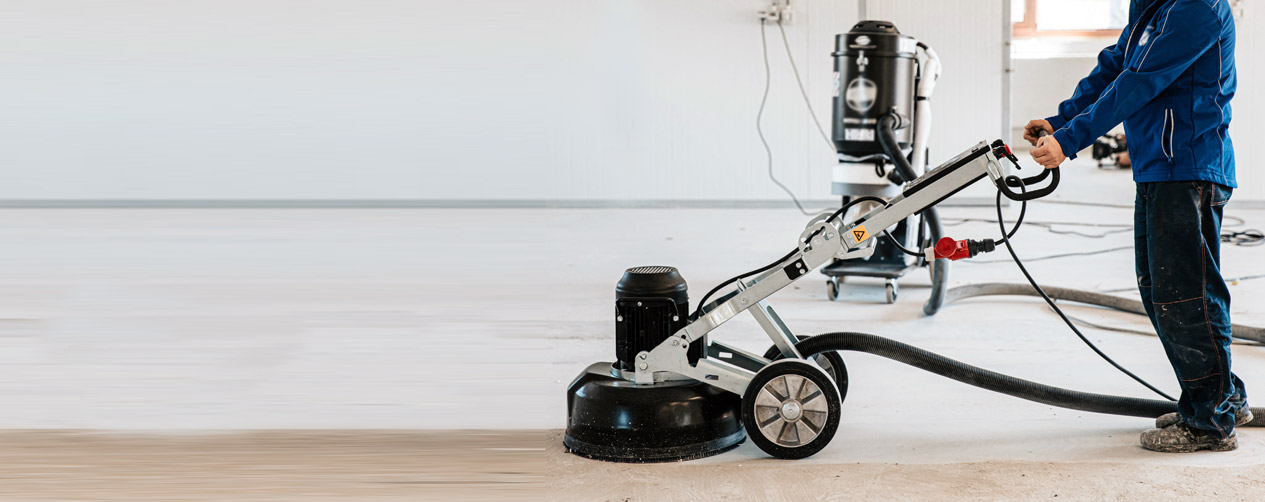
The answer to this question depends on what you intend to do with your concrete floor after the preparation process. Many different possibilities exist for both residential and commercial buildings and even more focus on exterior concrete projects like parking slabs, patios, and decorative hardscaping. Also, you must take into account whether the concrete is newly poured or if it is an older installation that is going to get new stain or paint, waterproofing, or another type of coating.
A concrete floor can be a great asset to any home or business. However, before the concrete is sealed and ready for use, there are many steps that need to be taken to protect it as well as prepare it for daily use.
Do I need to Prep a New Concrete Floor?

The process of curing concrete is a lengthy one. It can take many days for the surface to dry completely and reach full strength. The curing process starts when the concrete is first laid down, but construction or any further prep work cannot be completed until the curing process has finished. Concrete takes about 7-14 days to cure to a specified PSI, while it takes at least 28 days for the surface to reach 1% water evaporation per day. Of course, this all depends on the thickness of the floor, the atmospheric conditions, and the type of concrete used in the project. This type of specific, technical question is best left to your concrete contractor like TG Basile to answer.
New concrete won’t need to be prepped to be sealed. The main reason for prepping a concrete floor is to remove any contaminants, irregularities or other issues to ensure the best quality surface for the sealing product to adhere to.
When Is Concrete Floor Prep Necessary?
Prep work on a concrete floor varies depending on the area being worked on and what the project plan is for the space. Unless you are simply leaving the concrete alone without any treatments or coatings at all, a variety of preparatory tasks are needed. Although there are a variety of options that are available for your specific needs, the following three prep methods are quite common.

Acid Etching
This preparation method uses an acid solution directly applied to the concrete floor. It is spread out over the whole surface with a push broom, scrubber, or similar tool. The acid then sits on the concrete for a short period of time in order to eat away at the stains and other residue that accumulated on the surface since the concrete was first laid. Then, the solution is removed through vacuuming, power washing, or other processes. The final step is to neutralize the acid and allow everything to dry completely.

Grinding
Get rid of cracks, stains, and rough spots with a grinding machine. This takes a lot of physical ability and skill to keep the grinder moving and create a smooth surface rather than circular patterns or arcs of different levels. This process requires either an on-site vacuum attached to the machine and extra vacuuming afterward to make sure the concrete floor is completely ready for coating.

Shot Blasting
This is another mechanical process that uses tiny shock pellets to blast the surface of the concrete. It is much like sandblasting but uses different particulate to get the job done right. This requires professional service from a trained team who has access to the equipment including the vacuum system that reclaims the shot after use. This method can actually save you some time when deciding when you need to prep the concrete floor because it does not include a residue recovery process or much cleanup.
The general rule of thumb about when to prep your concrete floor using any of these methods is to do it as close to the final coating application work as possible. After all, you do not want to accidentally spill or drop something on the prepared concrete and have to do it all over again. This is especially important for outside floors or patios that may be affected by the weather.
What is the timeline on prepping a concrete floor?
Ultimately, the answer to the question of when you need to prep your concrete floor depends on far too many factors to give a simple solution. Of course, you need to do final preparation after the concrete floor is completely dry and set. If you are working with an older floor, you need sufficient time to do all the preparation before a new finish or coating is applied. In most cases, prep the floor as soon as possible before you apply paint, epoxy, or any other type of surface treatment to minimize the risk of issues appearing between the two events.
For an assessment of your concrete, and options on prepping and sealing or coating your concrete, contact TG Basile here to schedule a consultation.